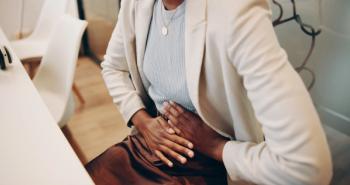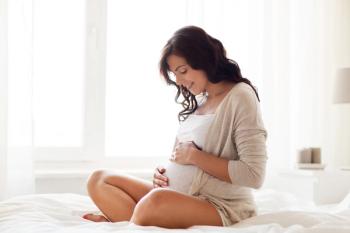
Interstitial cystitis: Simplified diagnosis and treatment
Interstitial cystitis/bladder pain syndrome (IC/BPS) is now recognized as a common etiology in women with chronic pelvic pain.
Interstitial cystitis/bladder pain syndrome (IC/BPS) is now recognized as a common etiology in women with chronic pelvic pain. The prevalence of this syndrome ranges from 2.7% to 6.5%, which translates to between 3.3 and 7.9 million women in the United States.1 The true accuracy of this data is limited by the varying definitions of IC/BPS and the underdiagnosis of patients.2 Fortunately, simple and effective treatments are now available. Most patients with IC/BPS can be treated using efficient office-based algorithms to achieve significant relief of their symptoms. Diagnosing and establishing a treatment plan, however, can be daunting for practitioners inexperienced in treating patients with IC/BPS. Efficient diagnosis and effective treatment for IC are explored and reviewed here.
Definitions
The term “IC” was first coined in 1887 and has evolved into the entity we know today.3 The simplest definition of IC/BPS as provided by the American Urological Association (AUA) is “an unpleasant sensation (pain, pressure, or discomfort) perceived to be related to the urinary bladder, associated with lower urinary tract symptoms of more than six weeks duration, in the absence of infection or other identifiable causes.”4
In 1988, the National Institute of Diabetes and Digestion and Kidney Diseases (NIDDK) developed rigorous diagnostic criteria for research on IC. Unfortunately, these criteria became the de facto definition for diagnosis despite the controversy that many patients with IC symptoms lack classic cystoscopic findings (glomerulations or Hunner’s ulcers). It is estimated that the NIDDK criteria miss 60% of patients with IC.2 In response to this, the International Continence Society recommended using the term “BPS,” which includes the more relaxed definition described previously.5
Currently, no ICD-9/10 code for BPS exists. The ICD-9/10 codes for IC are listed in Table 1. For simplicity and consistency, consider using the term IC in discussions with patients and for clinical documentation and billing. For the remainder of this article, IC will be used to refer to patients with IC and/or BPS.
Pathophysiology
Although the exact etiology of IC is unknown and is likely multifactorial, the leading theory can be used as a model to understand how symptoms occur and why certain treatments can be effective (Figure 1). The glycosaminoglycan (GAG) layer normally coats the urothelium and acts as a nonspecific defense mechanism against infection and urinary irritants.6 This layer normally contains heparin; it is believed that the absence of heparin causes an increase in GAG layer permeability. Urinary irritants then penetrate the urothelium leading to tissue damage, pain, and hypersensitivity through activation of the underlying nerves and muscle.7 Activation of bladder mast cells may also play a role in the propagation of ongoing bladder damage.8
Another way to conceptualize IC is as a visceral pain syndrome. Compared with somatic nerves, visceral nerves in the pelvis transmit signals more slowly, are mapped more poorly in the central nervous system (CNS), and overlap with innervation of other pelvic organs. In addition, non bladder-related syndromes that cause pelvic pain can initiate visceral and CNS sensitization. Chronic pelvic neural upregulation results in poorly localized and poorly characterized symptoms. Subsequently, bladder nerve stimulation can be perceived as bladder origin pain. Irritable bowel syndrome (IBS) is another common visceral pain syndrome. Up to 48% of patients with IC also have symptoms consistent with IBS.9 Treatments for IC directly or indirectly are designed to help downregulate the visceral nerve signals in the pelvis.
Diagnosis
Patients with frequent symptoms of urinary tract infection (UTI) but repeated negative cultures should be evaluated for IC. It is also important to consider screening all patients presenting with subacute or chronic pelvic pain for IC.
Screening tools
Two validated screening tools are available, the Pelvic Pain and Urgency/Frequency (PUF) patient symptom scale and the O’Leary-Sant IC symptom and problem index.10 These short questionnaires can be administered to patients on intake. Higher screening scores correlate most closely with the diagnosis of IC.11 Screening questionnaires are available online through the Interstitial Cystitis Association (ICA) (see Resources).
History/review of systems/physical examination
It is important to understand the characteristics of the patient’s pain including location, duration, character, intensity, and radiation, as well as aggravating and relieving factors. Suprapubic, midline, or generalized pelvic pain is suggestive of IC. Localized or unilateral pain symptoms may indicate focal musculoskeletal or nerve dysfunction. The practitioner should inquire about a history of recurrent bladder infections. Sometimes, these symptoms have occurred in the distant past.12 Recurrent “yeast” infection symptoms without significant discharge or vulvodynia may also represent flares of bladder pain referred to the vulva.13
The review of systems of the pelvic organs is especially important. Clinical diagnosis of other pelvic pain conditions is common in patients with IC.11 Patients should be screened for symptoms of endometriosis (cyclic symptoms, dyspareunia), IBS (constipation, diarrhea), and fibromyalgia (headache, migraine, other chronic pain).
Finally, a history of sinus allergy symptoms, asthma, and autoimmune conditions are common in patients with IC and can help direct therapy. This focused review of systems can be completed quickly, and higher numbers of positive responses increase the likelihood that a particular patient has IC.
The pelvic exam can also provide clues to the diagnosis of IC. The clinician should start with a single-handed rather than a bimanual exam to exclude the muscles of the lower abdominal wall in the evaluation. Bladder base tenderness and/or bilateral levator tenderness (ie, pelvic floor dysfunction) is common in patients with IC. If the abdominal or pelvic exam reveals focal muscle tenderness, ilioinguinal or pudendal nerve blocks may be helpful. Anesthetic blocks, although not actually a direct treatment for IC, can be very helpful for patients with focal muscle findings. Improvement in symptoms from nerve blocks would suggest an alternative diagnosis, as IC is often a diagnosis of exclusion.
Laboratory and ancillary testing
Urinalysis with microscopy should be performed in all patients with suspected IC to exclude infection and hematuria. A urine culture should be performed if the urinalysis suggests UTI.10 For patients with persistent microscopic hematuria and negative urine cultures, consider work-up using AUA guidelines, which include serum creatinine, computed tomographic urogram, and cystoscopy (see Resources).
The potassium sensitivity test (PST) was developed to aid in the diagnosis of IC. It is based on the hypothesis that an abnormally permeable urothelium allows diffusion of potassium into the bladder wall, where it causes characteristic symptoms. Although the PST can be useful, false-positive and false-negative results are possible, and the test can be uncomfortable and irritating for the patient. Thus, it is no longer recommended for routine diagnosis of IC.11,14 An easier test, the anesthetic bladder challenge (ABC) or bladder instillation, is now used by many experts.15 This test/treatment can be administered quickly and easily during a patient’s first visit, and it avoids the discomfort associated with the PST.
For patients with a PUF questionnaire score greater than 10 to 15, and a history, review of symptoms, and exam suggestive of IC, administering the ABC as a confirmatory test should be considered. Typical supplies, medications, and administration are detailed in Table 2. This mixture can be prepared and administered in just a few minutes. As it can precipitate, the mixture should be used within 24 to 48 hours.
Patients should be told to schedule a follow-up visit to confirm the diagnosis. They should also be encouraged to monitor their response to the ABC and learn about IC through online or printed resources. In the absence of infection, temporary improvement in symptoms for several hours or days after administration of the ABC can be used to support the diagnosis and justify the initiation of therapy.10 Once IC is diagnosed, multimodal therapy can be initiated as outlined in the following section. For patients with more subtle symptoms or response to the ABC, administering 3 to 4 ABCs over several weeks can be considered to establish a diagnosis prior to initiating therapy. Separate visits for diagnosis and initiation of treatment can be helpful for patients and practitioners alike.
Treatment
First- and second-line treatments
AUA guidelines and algorithms for the diagnosis and treatment of IC, as well as information available online from the ICA and the IC Network, are useful references for both providers and patients. These online references can be shared with patients at their initial visits. A downloadable information sheet used at Scripps Clinic is also available (see Resources).
Multimodal therapy is a key to successful treatment of patients with IC. Monotherapy can be frustrating because it works slowly, if at all.16,17 Encouraging patients to commit to an initial 6- to 8-week course of multimodal therapy will improve symptoms quickly and build confidence that the problem can be managed successfully. Initial multimodal therapy regimens should include a combination of first- and second-line treatments from the AUA IC therapy algorithm. Suggested initial therapy is outlined in Table 3. The majority of patients respond well to a combination of these therapies.
Dietary factors, lifestyle modifications, physical therapy
Dietary triggers have been identified in up to 90% of patients diagnosed with IC. Citrus, tomatoes, artificial sweeteners, coffee, tea, chocolate, alcohol, and spicy food can exacerbate symptoms, although this varies significantly among patients.18 Patients should be encouraged to explore how diet modification might help control their symptoms. Additional lifestyle modifications for IC management include relaxation techniques and optimization of stress management, low-impact exercises, pain management techniques (ie, warm sitz baths), wearing nonrestrictive clothing, bladder retraining, and controlled fluid intake.
For patients with findings suggestive of significant musculoskeletal pain or muscle spasm identified on exam, physical therapy (and/or nerve blocks) targeted to the abdominal wall and pelvic floor musculature can provide significant relief.19
Oral therapy
Several oral therapies are used in the treatment of IC. These are selected based on symptomatology and associated comorbidities such as IBS, migraines, and allergies, among others. Sample initial therapy is outlined in Table 3. Pentosan polysulfate is the only oral FDA-approved medication for the treatment of IC. The mechanism of action of this medication is unknown, but it is believed to be from either rebuilding the GAG layer, mast cell stabilization, or by neutralizing toxic substances within the urine.20 An adjunct oral medication is typically used in combination with it, including either an antihistamine (hydroxyzine 10-25 mg/d) or a tricyclic antidepressant (amitriptyline 10-25 mg/d). Patients with IC have an increased concentration and activation of mast cells, which leads to release of histamine and other inflammatory mediators.8 Amitriptyline is believed to exhibit analgesic properties and has been widely used for other chronic pain syndromes.21 For patients with severe symptoms, consider using all 3 of these medications for initial therapy. Urinary analgesics such as phenazopyridine or the combination drug hyoscyamine/methenamine/methylene blue/phenyl salicylate/sodium phosphate can also be helpful for symptom flares.
Intravesical therapy
Many experts recommend an initial series of approximately 9 bladder instillations in the first 6 to 8 weeks of therapy. These are performed along with diet modification and oral therapy. This initial series of treatments usually results in rapid improvement in symptoms and acts as a “jump start” to therapy.17
A premixed, compounded bladder instillation of alkalinized lidocaine and heparin is now available for the treatment of interstitial cystitis. It can be purchased directly by patients for home use or by physicians for use in the office. Kits come with a choice of catheters and are stable for storage for at least 6 months.
Patients with symptom flares while on oral therapy can return for additional bladder instillations on an as-needed basis, but the urine should first be evaluated for infection and treated appropriately.
Bladder instillations can be administered by an LVN or RN. These visits can also be used for patient education. Billing for these services performed by nursing staff is often appropriate. Coding and billing for evaluation and treatment are shown in Table 1.
Additional therapy options
Patients with severe IC may require additional therapies. If first- and second-line therapies are not providing sufficient relief or are not tolerated, additional treatments (or referral) may be considered using the previously noted AUA guidelines including: cystoscopy under anesthesia with low-pressure hydrodistension and/or fulguration of Hunner’s ulcer; sacral nerve stimulation; percutaneous tibial nerve stimulation (PTNS); or intradetrusor botulinum toxin injections. These therapies do not need to be performed in a specific order. Cyclosporin A and urinary diversion with or without cystectomy are rarely indicated.
Although cystoscopy with hydrodistention under general anesthesia is no longer required for the diagnosis of IC, it continues to have a role in treatment. It can reduce pain and discomfort in some IC patients for up to 6 months. Not everyone benefits from this procedure, however, and it may take up to several weeks to notice any symptom improvement. For patients undergoing surgical treatment for endometriosis, performing cystoscopy with hydrodistention should be considered at that time. It is an easy procedure for any surgeon with basic cystoscopic privileges to learn.
Follow-up and long-term care
Following initial multimodal therapy, a follow-up visit should be scheduled to discuss continuing therapy. Most patients do not require ongoing intravesical therapy, although flares of symptoms can often be treated with a short course of 1 to 3 instillations. Continuing diet modification and oral therapy allows for continued downregulation and desensitization of pelvic nerves. Follow-up visits at 4- to 6-month intervals for 1 to 2 years to evaluate ongoing medications are appropriate.
A few patients with severe symptoms will benefit from ongoing intravesical therapy. These patients, and those who have difficulty traveling to the office, should be encouraged to perform self bladder instillations at home. Such patients should schedule a nursing visit dedicated to learning how to prepare and perform home instillations.
Summary
We now know that IC is a visceral pain syndrome and many patients have overlapping symptoms of other chronic pain syndromes. The ABC or bladder instillation is a helpful tool for diagnosis as well as therapy. Importantly, most providers can successfully care for patients with IC, and the majority of patients do not need to be referred to a specialist.
When caring for patients with IC, it is important to help them learn what works for them. IC is a disorder that exists on a spectrum, and each patient will require individually tailored therapy. Helping patients take charge of the management of their disease is the most effective strategy, and this will make patients grateful for the care you have provided.
References
1. Berry SH, Elliott MN, Suttorp M, et al. Prevalence of symptoms of bladder pain syndrome/interstitial cystitis among adult females in the United States. J Urol. 2011;186(2):540–544.
2. McLennan MT. Interstitial cystitis: epidemiology, pathophysiology, and clinical presentation. Obstet Gynecol Clin North Am. 2014;41(3):385–395
3. Parsons JK, Parsons CL. The historical origins of interstitial cystitis. J Urol. 2004;171(1):20–22.
4. Hanno P, Dmochowski R. Status of international consensus on interstitial cystitis/bladder pain syndrome/painful bladder syndrome:2008 snapshot. Neurourol Urodyn. 2009;28(4):274–286.
5. Abrams P, Cardozo L, Fall M, et al. The standardisation of terminology of lower urinary tract function: report from the Standardisation Sub-committee of the International Continence Society. Am J Obstet Gynecol. 2002;187(1):116–126.
6. Lilly JD, Parsons CL. Bladder surface glycosaminoglycans is a human epithelial permeability barrier. Surg Gynecol Obstet. 1990;171(6):493–496.
7. Parsons CL. The role of the urinary epithelium in the pathogenesis of interstitial cystitis/prostatitis/urethritis. Urology. 2007;69(4 suppl):9–16.
8. Theoharides TC, Kempuraj D, Sant GR. Mast cell involvement in interstitial cystitis: a review of human and experimental evidence. Urology. 2001;57(6 suppl 1):47–55.
9. Rodriguez MA, Afari N, Buchwald DS; National Institute of Diabetes and Digestive and Kidney Diseases Working Group on Urological Chronic Pelvic Pain. Evidence for overlap between urological and nonurological unexplained clinical conditions. J Urol. 2009;182(5):2123–2131.
10. Evans RJ, Sant GR. Current diagnosis of interstitial cystitis: an evolving paradigm. Urology. 2007;69(4 suppl):64–72.
11. Parsons CL, Dell J, Stanford EJ, et al. Increased prevalence of interstitial cystitis: previously unrecognized urologic and gynecologic cases identified using a new symptom questionnaire and intravesical potassium sensitivity. Urology. 2002;60(4):573–578.
12. Rosenberg MT, Hazzard M. Prevalence of interstitial cystitis symptoms in women: a population based study in the primary care office. J Urol. 2005;174(6):2231–2234.
13. Kahn BS, Tatro C, Parsons CL, Willems JJ. Prevalence of interstitial cystitis in vulvodynia patients detected by bladder potassium sensitivity. J Sex Med. 2010;7(2 pt 2):996–1002.
14. Sant GR. Etiology, pathogenesis, and diagnosis of interstitial cystitis. Rev Urol. 2002;4 suppl 1:S9–S15.
15. Hanno P. Is the potassium sensitivity test a valid and useful test for the diagnosis of interstitial cystitis? Against. Int Urogynecol J Pelvic Floor Dysfunct. 2005;16(6):428–429.
16. Rosenberg MT, Moldwin RM, Stanford EJ. Early diagnosis and management of interstitial cystitis: what primary care clinicians should know. Womens Health Primary Care. 2004;7(9):456–463.
17. Dell JR, Parsons CL. Multimodal therapy for interstitial cystitis. J Reprod Med. 2004;49(3 suppl):243–252.
18. Shorter BL, Lesser M, Moldwin RM, Kushner L. Effect of comestibles on symptoms of interstitial cystitis. J Urol. 2007;178(1):145–152.
19. Weiss JM. Pelvic floor myofascial trigger points: manual therapy for interstitial cystitis and the urgency-frequency syndrome. J Urol. 2001;166(6):2226–2231.
20. Chiang G, Patra P, Letourneau R, et al. Pentosanpolysulfate inhibits mast cell histamine secretion and intracellular calcium on levels: an alternative explanation of its beneficial effect in interstitialcystitis. J Urol. 2000;164(6):2119–2125.
21. McQuay HJ, Carroll D, Glynn CJ. Dose-response for analgesic effect of amitriptyline in chronic pain. Anaesthesia.1993;48(4):281–285.
22. Moore KN, Fader M, Getliffe K. Long-term bladder management by intermittent catheterization in adults and children. Cochrane Database Syst Rev. 2007;(4):CD006008.
Newsletter
Get the latest clinical updates, case studies, and expert commentary in obstetric and gynecologic care. Sign up now to stay informed.











